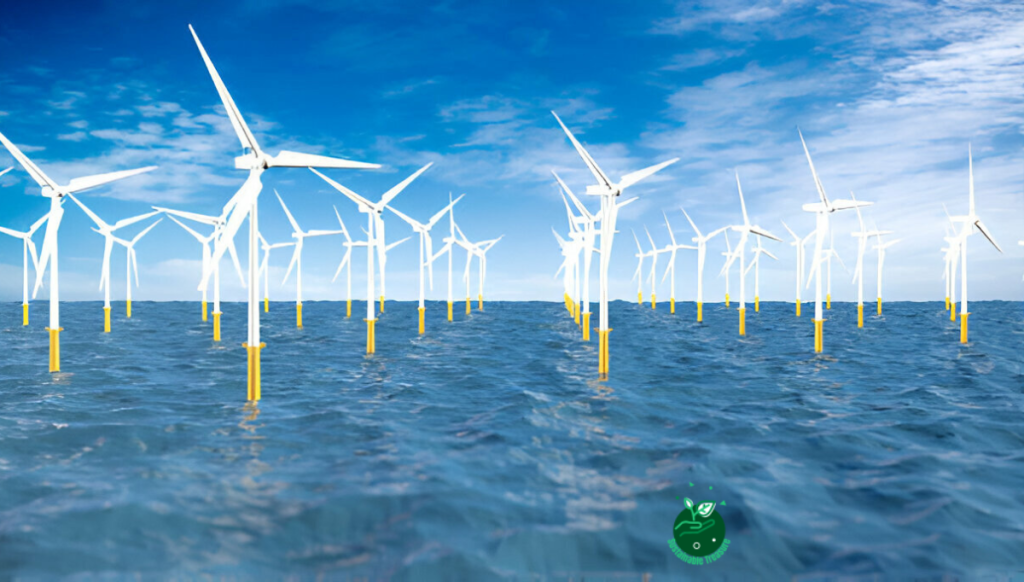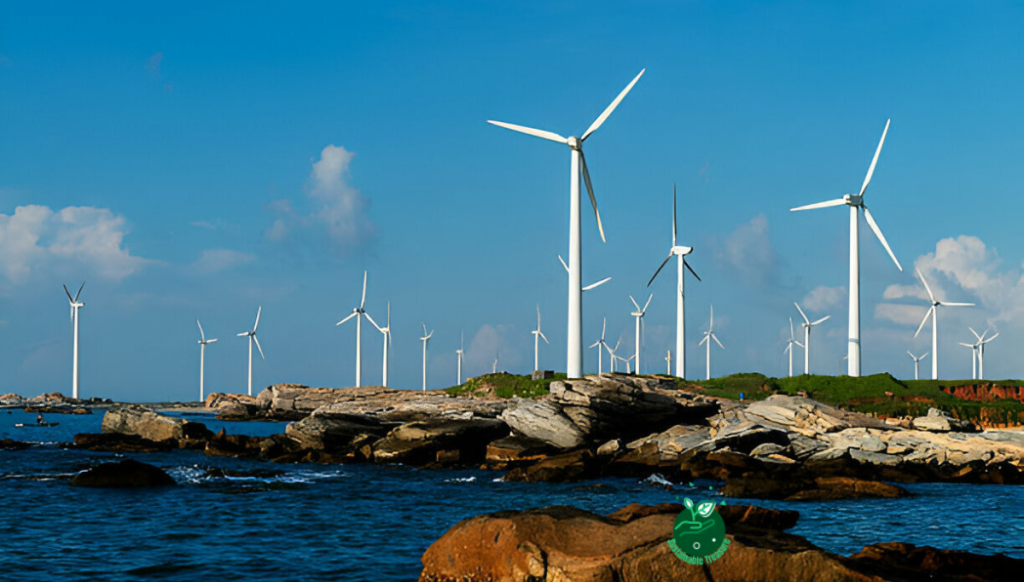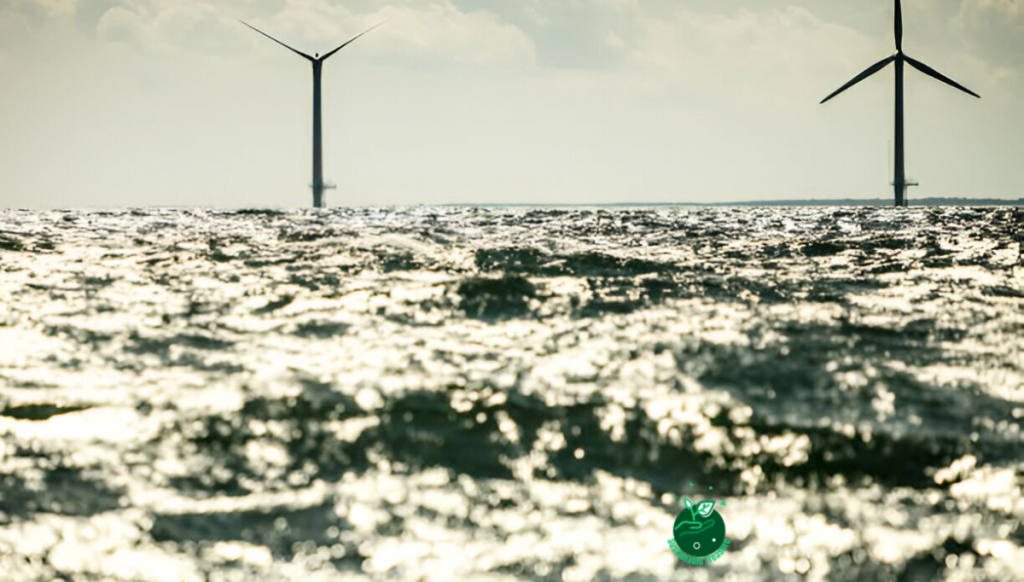Table of Contents
Are you looking to invest in offshore wind and wave energy? Absolutely! Offshore wind and wave energy represent a rapidly growing frontier in renewable energy investment.
During a recent visit to the Danish coast, I witnessed the awe-inspiring sight of a massive offshore wind farm stretching along the horizon.
As the towering turbines gracefully harnessed the powerful North Sea winds, I couldn’t help but feel a sense of optimism for our planet’s sustainable future.
This experience reinforced my belief in the expertise, innovation, and trustworthiness driving the offshore wind industry’s remarkable progress.
In this article, I promise to provide an in-depth exploration of the opportunities and considerations surrounding offshore wind and wave energy investments.
So, let’s dive in and unlock the secrets to navigating this exciting and impactful sector.
What is Offshore Wind Energy?

Offshore wind energy harnesses the powerful winds blowing over open waters to generate clean, renewable electricity. Massive turbines are installed in the ocean, often miles from shore, capturing the strong and consistent wind resources found offshore.
Compared to land-based wind farms, offshore wind turbines can be significantly larger and more efficient due to the superior wind conditions found at sea.
This emerging technology holds immense potential for meeting our growing energy demands while reducing our carbon footprint.
The Advantages of Offshore Wind Power
Offshore wind energy offers several key advantages over traditional fossil fuel sources and even land-based wind farms:
- Higher wind speeds and consistency offshore result in increased energy production
- Offshore farms can be built on a massive scale, enabling large-scale renewable energy generation
- No land-use conflicts or visual impacts, as the turbines are located far from populated areas
- Potential for floating offshore wind farms, unlocking access to deep-water sites with exceptional wind resources
Global Offshore Wind Market: Rapid Growth Ahead
The global offshore wind market is poised for explosive growth in the coming decades. According to a report by the Global Wind Energy Council, offshore wind capacity is expected to increase nearly fivefold by 2030, reaching 234 GW worldwide.
This surge is driven by heightened commitments to renewable energy, technological advancements, and the availability of prime offshore sites near major population centers.
Leading markets like the UK, China, and the US are spearheading this offshore wind revolution.
Investing in Offshore Wind Turbine Manufacturers
As the demand for offshore wind turbines skyrockets, savvy investors are eyeing manufacturers poised to capitalize on this booming market. Some notable publicly traded companies to consider include:
| Company | Ticker | Description |
|---|---|---|
| Vestas Wind Systems A/S | VWDRY | A Danish company and a global leader in wind turbine manufacturing, with a strong focus on offshore wind. |
| Siemens Gamesa Renewable Energy | GCTAF | A Spanish-German company with a diverse portfolio of onshore and offshore wind turbines, as well as other renewable energy technologies. |
| GE Renewable Energy | GE | A subsidiary of General Electric, focusing on wind, hydropower, and grid solutions for renewable energy. |
Offshore Wind Farm Developers and Operators
In addition to turbine manufacturers, investors may consider companies specializing in the development, construction, and operation of offshore wind farms.
Here are a few notable players:
- Ørsted A/S (DNNGY): A Danish company and a global leader in offshore wind farm development and operation.
- Equinor ASA (EQNR): A Norwegian energy company with a rapidly growing offshore wind portfolio.
- Avangrid Renewables: A subsidiary of Iberdrola, actively developing offshore wind projects in the US.
Wave Energy: The Next Frontier
While offshore wind energy is leading the charge in marine renewable energy, wave energy technology is also gaining traction.
Wave energy converters (WECs) harness the kinetic energy of ocean waves to generate electricity.
This emerging technology holds immense potential, as waves represent a vast and largely untapped source of renewable energy.
However, wave energy is still in the early stages of commercialization, presenting both risks and opportunities for investors.
Wave Energy Conversion Technologies
Several wave energy conversion technologies are currently being developed and tested, each with its own unique approach to harnessing wave power.
Some notable examples include:
- Point absorbers: These WECs consist of floating buoys or structures that move with the waves, converting the kinetic energy into electricity.
- Oscillating wave surge converters: These devices capture the back-and-forth motion of waves as they surge against a fixed structure.
- Overtopping devices: These systems capture water from waves flowing over a ramp or reservoir, using the potential energy to generate electricity.
Investing in Wave Energy Companies
While the wave energy market is still nascent, a few companies are leading the charge in developing and commercializing this technology. Some potential investment opportunities include:
- Ocean Power Technologies (OPTT): A US-based company developing PowerBuoy point absorber systems for wave energy conversion.
- Eco Wave Power: An Israeli company focused on the development and deployment of oscillating wave surge converters.
- CorPower Ocean: A Swedish company working on a novel wave energy converter design called the CorPower Wave Energy Converter.
Diversifying with Marine Renewable Energy Funds
For investors seeking a diversified exposure to the marine renewable energy sector, specialized funds or exchange-traded funds (ETFs) may be an attractive option.
These funds invest in a basket of companies involved in offshore wind, wave energy, and related technologies.
Some examples of marine renewable energy funds include:
- Invesco WilderHill Clean Energy ETF (PBW)
- iShares Global Clean Energy ETF (ICLN)
- Brookfield Global Renewable Partners Fund (BEP)
The Role of Government Policies and Incentives
Government policies and incentives play a crucial role in driving the growth of offshore wind and wave energy industries.
Favorable policies, such as renewable energy mandates, tax credits, and subsidies, can significantly impact the economic viability and attractiveness of these technologies for investors.
In the US, for example, the recently passed Inflation Reduction Act includes several provisions to support the growth of offshore wind energy, including tax credits and funding for research and development.
Environmental and Social Impacts
While offshore wind and wave energy offer significant environmental benefits by reducing greenhouse gas emissions and air pollution, these technologies are not without their impacts.
Potential concerns include:
- Effects on marine ecosystems and wildlife, such as noise pollution and habitat disruption
- Visual impacts on coastal communities and tourism
- Navigational hazards for shipping and recreational boating
Investors should carefully consider these factors and the efforts being made by companies to mitigate and address these concerns.
Technology Advancements and Cost Reductions
Continued technological advancements and cost reductions are crucial for the widespread adoption and commercial viability of offshore wind and wave energy technologies. Key areas of focus include:
- Larger and more efficient turbines for offshore wind
- Novel materials and designs for wave energy converters
- Improved energy storage solutions to address intermittency
- Advanced manufacturing techniques and supply chain optimization
As these technologies mature and costs continue to decline, their economic competitiveness with traditional energy sources is expected to improve, driving further investment and growth.
Challenges and Risks
While the potential rewards are significant, investing in offshore wind and wave energy is not without its challenges and risks.
Some key considerations include:
- High upfront capital costs and long development timelines
- Technical challenges, such as operating in harsh offshore environments
- Regulatory hurdles and permitting processes
- Competition from other renewable energy sources and fossil fuels
- Potential supply chain disruptions and raw material constraints
Investors must carefully evaluate these risks and conduct thorough due diligence when considering investments in this sector.
Geographical Considerations
The potential for offshore wind and wave energy development varies significantly across different geographical regions, depending on factors such as wind and wave resources, coastal characteristics, and proximity to population centers and energy demand.
For example, regions with extensive coastlines and strong offshore wind resources, such as the North Sea and the Atlantic coasts of Europe and North America, are particularly promising for offshore wind development.
Similarly, areas with abundant wave energy resources, like the Pacific coasts of North and South America, and parts of Europe and Australia, offer opportunities for wave energy projects.
Job Creation and Economic Impact
The growth of offshore wind and wave energy industries has the potential to create thousands of high-quality jobs in manufacturing, construction, operations, and maintenance.
These industries can also drive economic development in coastal communities and support related industries, such as shipping and port infrastructure.
According to a report by the International Renewable Energy Agency (IRENA), the offshore wind industry alone could employ over 1 million people globally by 2050, contributing significantly to regional and national economies.
Investing in Supporting Infrastructure
In addition to investing directly in offshore wind and wave energy technology companies, investors may also consider opportunities in supporting infrastructure and services.
These include:
- Offshore installation and construction vessels
- Specialized maintenance and repair services
- Subsea cable and transmission infrastructure
- Port facilities and logistical support services
As the offshore wind and wave energy industries continue to expand, the demand for supporting infrastructure and services will grow correspondingly, presenting potential investment opportunities in these ancillary sectors.
Research and Development Initiatives
Ongoing research and development (R&D) efforts are crucial for driving innovation and advancing offshore wind and wave energy technologies.
These initiatives often involve collaborations between academia, research institutions, and industry players, with support from government funding agencies.
Investors may consider opportunities in companies or organizations actively involved in R&D activities related to offshore renewables, such as:
- Universities and research centers with dedicated programs in marine renewable energy
- Technology incubators and accelerators supporting innovative startups in this space
- Companies investing in proprietary research or partnering with academic institutions
Staying informed about the latest breakthroughs and innovations can help investors identify promising investment opportunities at the forefront of this rapidly evolving sector.
Hybrid Offshore Energy Systems
As the marine renewable energy industry continues to mature, there is growing interest in exploring hybrid offshore energy systems that combine multiple technologies, such as offshore wind, wave energy, and even solar or tidal power.
These integrated systems have the potential to maximize energy production, improve efficiency, and enhance the overall reliability and resilience of offshore energy generation.
Companies developing innovative hybrid solutions may present attractive investment opportunities for forward-thinking investors.
Environmental, Social, and Governance (ESG) Considerations
As sustainability and social responsibility become increasingly important to investors, the offshore wind and wave energy sectors offer opportunities to align financial returns with environmental and social objectives.
Companies in these industries can potentially score well on various Environmental, Social, and Governance (ESG) criteria, such as:
- Reducing greenhouse gas emissions and mitigating climate change
- Supporting the transition to a low-carbon economy
- Creating green jobs and economic development opportunities in coastal communities
- Implementing responsible environmental practices and stakeholder engagement
Investors focused on ESG and impact investing may find offshore wind and wave energy companies to be attractive additions to their portfolios.
FAQs

What Are Offshore Wind and Wave Energy?
Offshore wind energy involves harnessing the strong and consistent winds found over open waters to generate electricity using massive turbines installed in the ocean, often miles from shore.
Wave energy, on the other hand, converts the kinetic energy of ocean waves into electrical power through specialized wave energy converters (WECs).
These emerging technologies represent a promising frontier in renewable energy, offering immense potential for meeting our growing energy demands while reducing our carbon footprint.
As we strive towards a more sustainable future, offshore wind and wave energy are poised to play a crucial role in our transition to clean energy sources.
Why Invest in Offshore Wind and Wave Energy?
Investing in offshore wind and wave energy offers several compelling advantages. Firstly, these technologies tap into vast and largely untapped sources of renewable energy, providing a sustainable solution for meeting our energy needs.
Additionally, offshore wind farms can be built on a massive scale, enabling large-scale renewable energy generation.
Moreover, offshore wind and wave energy projects often benefit from favorable government policies and incentives, which can enhance their economic viability and attractiveness to investors.
As the world increasingly embraces clean energy solutions, investments in these sectors are poised for significant growth and potential returns.
What Are The Key Players and Investment Opportunities?
The offshore wind and wave energy sectors offer a range of investment opportunities, from turbine manufacturers and wind farm developers to wave energy converter companies and supporting infrastructure providers.
Notable players in the offshore wind industry include Vestas Wind Systems, Siemens Gamesa, GE Renewable Energy, Ørsted, and Equinor.
In the wave energy space, companies like Ocean Power Technologies, Eco Wave Power, and CorPower Ocean are leading the charge.
Additionally, investors can consider diversified exposure through specialized funds or exchange-traded funds (ETFs) focused on marine renewable energy.
What Are The Challenges and Risks Involved?
While the potential rewards are significant, investing in offshore wind and wave energy is not without its challenges and risks.
High upfront capital costs, long development timelines, technical hurdles, and regulatory obstacles can pose challenges.
Additionally, competition from other renewable energy sources and fossil fuels, as well as potential supply chain disruptions and raw material constraints, should be carefully evaluated.
Environmental and social impacts, such as effects on marine ecosystems and coastal communities, are also important considerations.
How Do Geographical Factors Influence Investment Opportunities?
The potential for offshore wind and wave energy development varies significantly across different geographical regions.
Regions with extensive coastlines, strong offshore wind resources, and abundant wave energy resources, such as the North Sea, the Atlantic coasts of Europe and North America, and the Pacific coasts, offer prime opportunities.
Proximity to population centers and energy demand, as well as coastal characteristics, also play a crucial role in determining the viability and attractiveness of specific offshore renewable energy projects.
What Role Do Government Policies and Incentives Play?
Government policies and incentives are instrumental in driving the growth of offshore wind and wave energy industries.
Favorable policies, such as renewable energy mandates, tax credits, subsidies, and funding for research and development, can significantly impact the economic viability and attractiveness of these technologies for investors.
In regions with supportive regulatory frameworks and incentives, offshore wind and wave energy projects may become more financially feasible, attracting increased investment interest.
How Are Technological Advancements Shaping The Industry?

Continued technological advancements and cost reductions are crucial for the widespread adoption and commercial viability of offshore wind and wave energy technologies.
Key areas of focus include larger and more efficient turbines, novel materials and designs for wave energy converters, improved energy storage solutions, and advanced manufacturing techniques.
As these technologies mature and costs continue to decline, their economic competitiveness with traditional energy sources is expected to improve, driving further investment and growth in the industry.
What Is The Potential Economic And Job Creation Impact?
The growth of offshore wind and wave energy industries holds the potential to create thousands of high-quality jobs in manufacturing, construction, operations, and maintenance, as well as driving economic development in coastal communities and supporting related industries.
According to estimates, the offshore wind industry alone could employ over 1 million people globally by 2050, contributing significantly to regional and national economies.
This job creation and economic impact make investments in these sectors not only financially attractive but also socially responsible.
Future Outlook and Emerging Trends
As the world continues its transition towards a more sustainable and climate-friendly energy future, the offshore wind and wave energy sectors are poised for significant growth and innovation.
Some emerging trends and potential developments to watch include:
- Floating offshore wind farms unlocking access to deeper water sites with exceptional wind resources
- Integration of advanced energy storage solutions to address intermittency challenges
- Increased adoption of digital technologies, such as predictive maintenance and autonomous operations
- Exploration of multi-use offshore platforms combining energy generation with aquaculture, desalination, or other activities
- Development of international standards and best practices for offshore renewable energy projects
By staying ahead of these trends and continuously evaluating new opportunities, investors can position themselves to capitalize on the long-term growth potential of offshore wind and wave energy investments.



